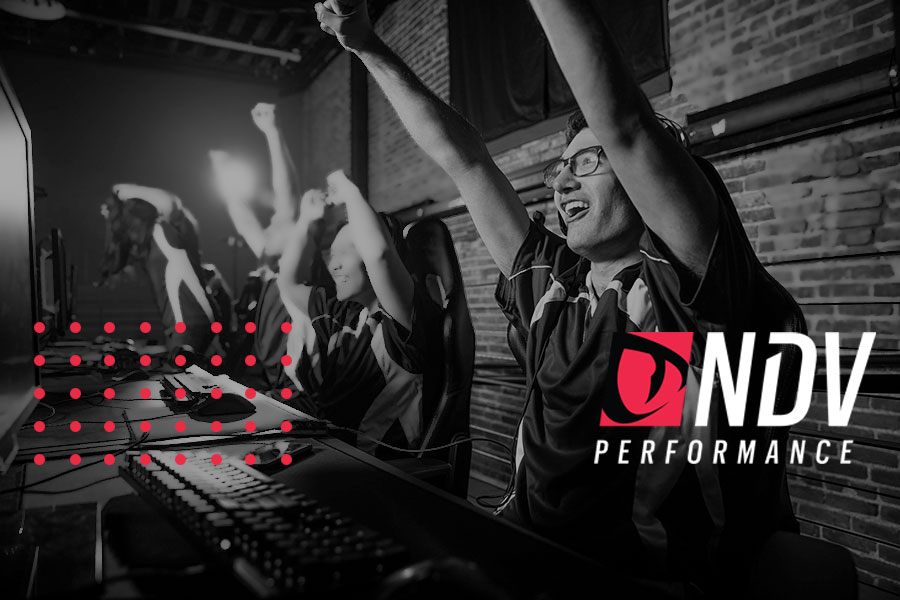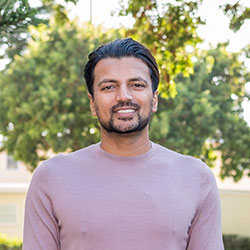
As our worlds become more digital and visually demanding, we are leaving the era when visual acuity is the defining standard of good vision. We are entering an era where performance vision is a new standard of that measurement and where ECPs are well positioned to be the gatekeepers to both visual performance and overall eye health.
Technology provides us with the means to view vision and eye health within the entirety of human physiology. And by taking a holistic approach, we can improve lives by providing personalized and performance-enhancing vision solutions based on access to a multitude of biometric data.
I come to this conclusion based on more than a decade of clinical and research experience. As an ophthalmology-trained neuro-ophthalmologist, I measure visual functions by studying psychometrics, and I also have been involved in developing applications of AI, wearables and human-machine interfaces toward enhancing performance vision.
In my experience, I have observed a gap in how we understand and integrate the human visual system with overall physiology. From a traditional clinical approach, I repeatedly saw cases where a patient was examined and found normal, yet they had unresolved visual issues. A full range of biometric measurements were taken but not applied fully nor effectively to solve a visual problem or enhance visual performance.
As ECPs, we face a series of essential questions: How do we contextualize the biometric data we collect? How do we make this data meaningful and actionable? And how do we set and achieve goals for improvements in visual performance, for a variety of patients?
In our case, our patients include both elite and amateur athletes involved in competition or training to meet a personal best. We also see students immersed in study and professionals who are overworked and visually stressed, as well as patients who are rehabilitating a visual deficit from a concussion or other injury.
The task of addressing these kinds of varied conditions, needs and goals is at the heart of an emerging area we call performance vision. It is based on collecting and applying visual psychometrics, but it also involves the human element that we derive by evaluating the patient in their daily life environment.
We work with patients in a series of steps that begin with establishing a holistic baseline, then we employ intervention devices and measure and adjust at every stage of our process.

Establish a Baseline
This focuses on visual function, visual physiology and ocular structure, with a mix of new technologies and old-safeguard devices the average ECP is familiar with. For visual function, we democratized visual psychometric measurements typically done in vision science labs, and we apply these measurement techniques in software applications, including games.
Our process includes what we call the Vision Performance Index (VPI), comprised of over 103 psychometric signals, captured in the context of playing games. Current technologies we use also focus on visual function, electrophysiology, and structure.
Assign Intervention Devices
Once we establish a baseline, we prescribe interventions that incorporate devices and processes. These may include well-known devices and systems from Senaptec, Neurotracker, RightEye, Reflexsion, A-Champs, SyncThink, and others. We often employ multiple devices to address a number of conditions.

Measure Post-Treatment
The same biometrics measured in establishing the baseline are recorded and tracked throughout treatment. Whether we are looking to improve sports performance or rehabilitate visual performance and processing following an injury, detailed measurements allow us to objectively track progress. I always am struck with how individualized results can be. We continually measure the effect of treatment, to determine if it has been effective or if another course is warranted.
We Are All Athletes
We often talk about sports-performance vision as a rarefied field. The fact is, we all are athletes in many ways. We compete in work, sports and social interactions. The visual information we process and how well we process it can make fundamental differences in all aspects of our lives.
I work with elite athletes, including teams of esports athletes—gamers—who are challenged to process an overload of visual information and make good decisions instantaneously, all in a high-stress, artificial digital environment. Micro-increments of improved processing can make a huge difference in this world. But the same is true in our everyday lives.
Improvements in visual intake and processing of visual information are sought after by weekend warriors looking for an edge in their tennis or golf game or by an under performing student looking to reduce the eye strain brought on by sitting in front of a computer monitor. Likewise, enhanced visual performance is critical for a surgeon peering through a scope and conducting robotic surgery. The recovery from a concussion can be accelerated with the care of an ECP. And we can help a beleaguered accountant get through tax season by reducing eye strain.
At the same time, how well we can read and process visual information can mean life or death.
Picture a police officer engaging a suspect in a dimly lit street confrontation, or a fireman skirting flames and calculating the compromised stability of the floor he is walking on. Still further, imagine a combat soldier in a firefight where her vision is obscured but augmented by data displayed on her goggles.
For all of these visual needs, the collection and analysis of clean biometric data–collected in a standardized and consistent manner—is the key to providing improved vision and eye health services. And in that regard, all ECPs can participate. To achieve this, we don’t need to change much of anything, except how we think about eyecare.
We hope that we are helping to equip the next generation of ECPs to help patients to achieve the highest level of visual performance and improve their lives.
Performance Vision Meets Varied Needs
The implications of a holistic process are not limited to elite athletes or even to sports. Virtually everyone can be helped. A treatment to deliver a competitive edge might be as simple as prescribing better, more personalized eyeglass lenses. Or it could include a regimen of performance enhancing exercises. Employed in a holistic way, biometric measurements have applications in meeting a variety of patient needs:
Sports vision performance: Professional, amateur and student-athletes all want to improve competitive skills or achieve a personal best.
Rehabilitative care: Those suffering concussions or injuries need help in relearning how they see and how they process visual information.
Low vision and partially sighted: New technology provides vast opportunities here, and the neurological component is a factor in success.
Military, firemen, police: The inherent dangers of high-risk occupations can be mitigated with biometric baseline measures and exercises to up-regulate and down-regulate select visual information.

KHIZER KHADERI, MD, MPH
is Adjunct Clinical Associate Professor at the Byers Eye Institute and is founder of Stanford’s Performance Vision Center. He also is founder and CEO of Vizzario, a human-centered AI platform where neuroscience is combined with artificial intelligence to deliver the next generation of intuitive AI.







